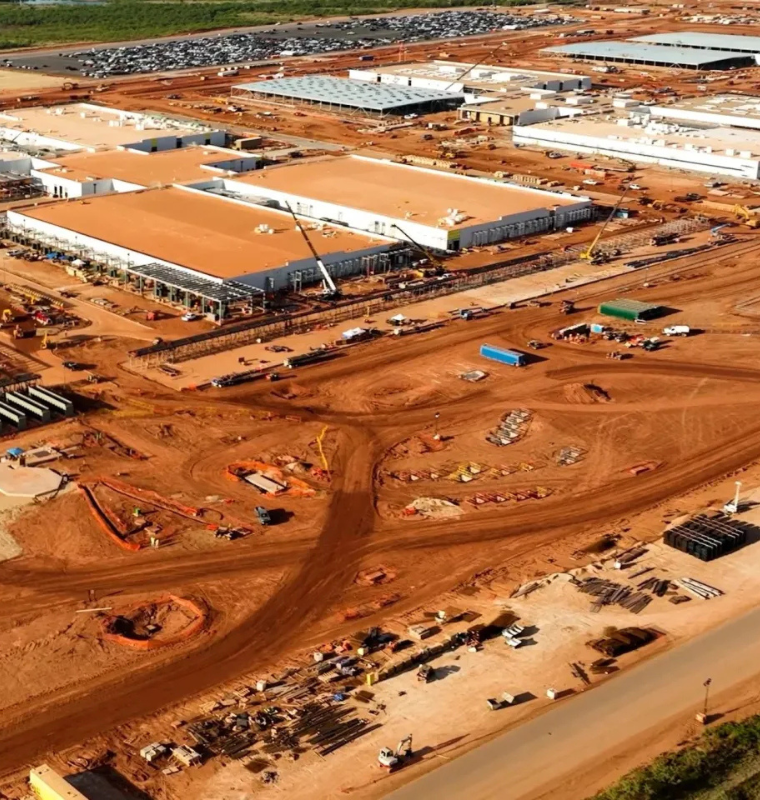U.S. Commerce Secretary Pushes for 50-50 Chip Production Split With Taiwan to Boost Domestic Supply
U.S. Commerce Secretary Pushes for 50-50 Chip Production Split With Taiwan to Boost Domestic Supply
By
Leah Rosenfeld
Last updated:
September 30, 2025
First Published:
September 30, 2025

Photo: BusinessWorld
The United States is pressing Taiwan to help bring balance to the global semiconductor supply chain. Commerce Secretary Howard Lutnick revealed in a recent interview that Washington has proposed a “50-50” production split, urging Taiwan to manufacture only half of the chips destined for the U.S. market while shifting the rest of production onto American soil.
This effort underscores a larger national security and economic strategy to reduce dependence on Taiwan, which currently produces over 90% of the world’s most advanced semiconductors. For decades, U.S. companies like Apple, Nvidia, and Qualcomm have relied heavily on Taiwan Semiconductor Manufacturing Co. (TSMC), the world’s largest chipmaker, to power everything from smartphones to artificial intelligence systems.
A push for domestic manufacturing
Lutnick emphasized that his objective is to have at least 40% of U.S. semiconductor demand met by domestic manufacturing before President Donald Trump’s term ends. Achieving that target, however, will require an unprecedented investment exceeding $500 billion in new U.S. chip plants, supply chains, and workforce development.
“The goal is simple — we need to make our own chips,” Lutnick explained. “If Taiwan makes 95% of the world’s supply, it leaves both of us vulnerable. Splitting it 50-50 would make Taiwan safer and the U.S. stronger.”
TSMC has already begun to expand operations in the United States. Since 2020, it has invested in fabrication plants in Arizona, with total investments now set to reach around $165 billion after announcing another $100 billion commitment earlier this year. Despite these projects, the U.S. still lags behind Asia, which dominates nearly 75% of global chip manufacturing capacity.
Strategic and security concerns
Taiwan’s dominance has long been described as its “Silicon Shield” — a factor believed to deter Beijing from military action, as disrupting global chip supplies would have devastating consequences. Lutnick challenged that view, arguing that over-concentration in Taiwan is a risk, not a safeguard.
“How would Taiwan even ship those chips to us in a conflict? By boat? By plane? That’s not a reliable defense,” Lutnick said. He added that under the 50-50 plan, the U.S. would remain reliant on Taiwan but would also have the capacity to sustain itself in times of crisis.
The geopolitical backdrop looms large. China continues to view Taiwan as its own territory, carrying out frequent military drills near the island this year. In April, Beijing staged large-scale exercises, prompting Washington to reaffirm its defense commitments. At the same time, Trump has repeatedly suggested that the U.S. deserves more in return for protecting Taiwan, even saying Taiwan “stole” America’s chip business.
Tariffs and trade negotiations
The Trump administration has also floated the possibility of 100% tariffs on imported semiconductors. However, officials noted that companies investing in U.S.-based manufacturing would be exempt. Washington and Taipei remain engaged in ongoing trade talks that could directly affect tariffs on Taiwanese chip exports.
Industry analysts say a 50-50 split could transform global semiconductor dynamics. If the U.S. succeeds in reaching 40% domestic output by the end of Trump’s term, it would mark a dramatic reversal after decades of decline. In the 1990s, the U.S. produced around 37% of the world’s chips, but that figure has since fallen below 12%.
What comes next
Rebuilding America’s semiconductor base will not be quick or easy. Building advanced chip plants often takes five years or more, and each facility can cost upwards of $20 billion. Still, with rising tensions in East Asia and growing demand for AI, defense, and consumer electronics, Washington sees little choice but to accelerate its push.
Lutnick’s message to Taiwan is clear: sharing the responsibility for chip production is not just an economic deal but a matter of security for both nations. Whether Taipei embraces the 50-50 proposal remains to be seen, but the debate over semiconductors is shaping up to be one of the most critical flashpoints in U.S.-Taiwan relations for years to come.
Popular articles
Subscribe to unlock premium content
Why Consumers Buy Limited-Edition Fashion and Beauty Products

How K-Beauty Changed the Global Skincare Industry and Consumer Expectations

How Streetwear Became a Billion-Dollar Industry From Niche to Mainstream

Why Consumers Buy Limited-Edition Fashion and Beauty Products

How K-Beauty Changed the Global Skincare Industry and Consumer Expectations

Why Consumers Buy Limited-Edition Fashion and Beauty Products









